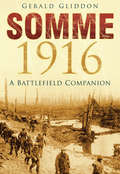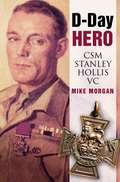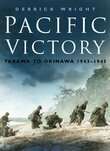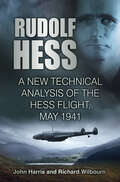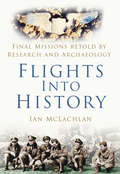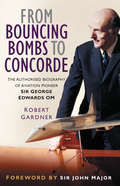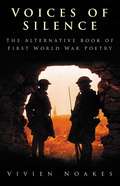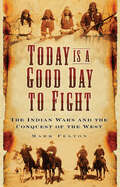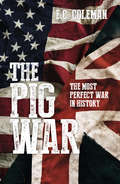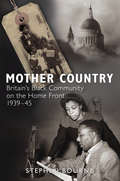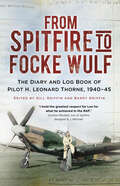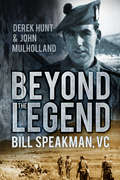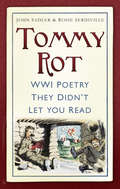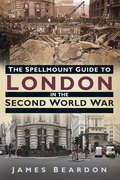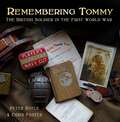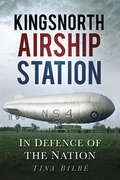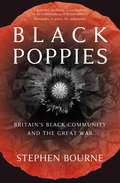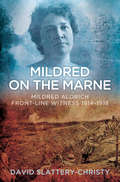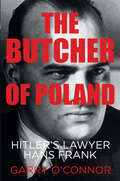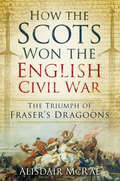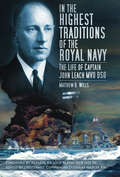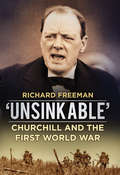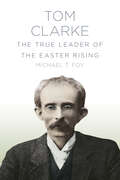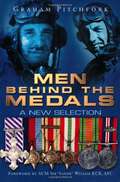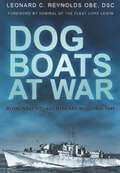- Table View
- List View
Somme 1916: A Battlefield Companion
by Gerald GliddonGerald Gliddon's classic survery of the Somme battlefield in 1916, first published in 1987 to great acclaim, has been greatly expanded and updated to include the latest research and analysis. Supported by a wide selection of archive photographs and drawing on the testimony of those who took part, this new edition covers both the famous battle sites, such as High Wood and Mametz Wood and lesser known villages on the outlying flanks. It includes a day-by-day account of the British build-up on the Somme and the ensuing struggle, British and German orders of battle and a full history of the cemeteries and memorials, both 'lost' and current, that sprang up in the years following the First World War. The author also provides thumbnail biographies of all the senior officers to fall, as well as the winners of the Victoria Cross and those who were 'shot at dawn'. In addition, Somme 'personalities' such as George Butterworth are covered in far greater detail than before.
D-Day Hero: M Stanley Hollis VC
by Mike MorganStanley Hollis won the Victoria Cross when, on 6th June 1944, he single-handedly stormed a German pillbox before going on to save the lives of two comrades. Drawing on Hollis's personal diaries and letters, the author describes the real man behind the heroic image.
Pacific Victory: Tarawa to Okinawa 1943-1945
by Derrick WrightThe American ‘island-hopping’ campaign in the Pacific was a crucial factor in the eventual defeat of Japan in 1945. In November 1943, Tarawa tested the doctrine of seaborne assault to the limit in a 76-hour battle. Peleliu in September 1944 was the ‘unknown battle’, where a combination of poor planning, dubious leadership and a major change in Japanese defensive strategy turned what was expected to be a three-day engagement into one of the most savage battles of the war. Iwo Jima in February 1945 was a titanic struggle that eclipsed all these battles, as three Marine divisions fought in appalling conditions against an enemy for whom surrender was not an option. Okinawa was a foretaste of what could be expected in the proposed assault on the Japanese mainland. These battles were all characterised by savage fighting and heavy casualties on both sides. Japanese garrisons often fought to the death and kamikaze air attacks posed grave threats to the supporting US forces. Employing archive colour and black and white photographs, maps and first-hand accounts, the author relates these pivotal battles to the wider struggle against the Japanese in the Pacific.
Rudolf Hess: A New Technical Analysis of the Hess Flight, May 1941
by John Harris Richard WilbournOn 10 May 1941, on a whim, Hitler's deranged deputy Rudolf Hess flew a Messerschmitt Bf 110 to Scotland in a bizarre effort to make peace with Britain; Goering sent fighters to stop him but he was long gone. Imprisoned and tried at Nuremberg, he would die by his own hand in 1987, aged 93. That's the accepted explanation. Ever since, conspiracy theories have swirled around the famous mission. How strong were Hess's connections with the British establishment, including royalty? Was the death of the king's brother, the Duke of Kent, associated with the Hess overture for peace? In the many books written about Hess, one obvious line of enquiry has been overlooked, until now: an analysis of the flight itself - the flight plan, equipment, data sheets, navigation system. Through their long investigation, authors John Harris and Richard Wilbourn have come to a startling conclusion: whilst the flight itself has been well recorded, the target destination has remained hidden. The implications are far reaching and lend credence to the theory that the British establishment has hidden the truth of the full extent of British/Nazi communications, in part to spare the reputations of senior members of the Royal Family. Using original photography, documentation and diagrams, Rudolf Hess sheds new light on one of the most intriguing stories of the Second World War.
Flights Into History: Final Missions Retold by Research and Archaeology (History Press Ser.)
by Ian McLachlanIn this compelling sequel to Final Flights, aviation archaeologist Ian McLachlan has reconstructed the dramatic last flights of Second World War airmen, including the first Fortress to fall in combat from the USAAF's 447th Bomber Group; the final flight of an intruder Mosquito pursuing a German night fighter; the courage of a Lancaster pilot responsible for six lives aboard a burning aircraft; the story of a Spitfire's last flight and its heroic Belgian pilot. Exciting stories are also recounted of those whose misdirected courage saw them serve under the swastika. In reconstructing long-forgotten wartime events, often from buried wreckage, eyewitness accounts and contemporary documentation, aviation archaeologists can bring recognition to the individual flyers involved and shed new light on the air war over Britain and Europe during the Second World War. Even the discovery of small fragments can be significant. They provide evidence or prompt new research, revealing stories that offer a uniquely human dimension and reveal the hopes, fears, aspirations and pleasures of the aircrew involved. Ian McLachlan and other aviation archaeologists have now done them justice.
From Bouncing Bombs to Concorde: The Authorised Biography of Aviation Pioneer Sir George Edwards OM
by Robert GardnerGeorge Edwards' name is synonymous with the Vickers Viscount, the world's first turboprop airliner; the controversial TSR2 project and the legendary Anglo-French Concorde. During the Second World War, it was Edwards who made the Dam Busters' bouncing bombs bounce.
Voices of Silence: The Alternative Book of First World War Poetry
by Vivien NoakesThe poetry of the First World War has determined our perception of the war itself. This volume features poetry drawn from old newspapers and journals, trench and hospital magazines, individual volumes of verse, gift books, postcards, and a manuscript magazine put together by conscientious objectors.
Today is a Good Day to Fight: The Indian Wars and the Conquest of the West
by Dr Mark FeltonBlood, guts, dust and hatred: the real history of the American West. Today is a Good Day to Fight covers the period from the initial penetration of the region by settlers and prospectors in the 1840s until the end of the Indian Wars in the 1890s. It explains the history of white-Indian conflict from the military point of view, showing how the United States used its army to wage terrible wars of conquest upon Native American peoples in order to take the land from them and enrich the growing nation, and how the Indians never really stood a chance in trying to defend their homelands. Highlighting the fractious and bitter relations between tribes unable and unwilling to unite in time to stave off their common enemy, it tries to portray the utter bitterness of the conflict between white and Indian, and how both sides resorted to increasingly foul acts of war and slaughter as the conflict progressed. A dirty, underhanded and scrappy conflict, the outrages committed by both sides fuelled bitterness and resentment that still exists in America today.
The Pig War: The Most Perfect War in History
by E C ColemanWith a plot to grace any comic opera, the 1859-72 'Pig War' broke out when an American living on a quietly disputed small island in the Gulf of Georgia shot a British pig he found rooting up his garden produce. The authorities on nearby Vancouver Island and the military leadership of the adjacent Washington Territory both felt they had good reasons to escalate a trivial incident into a full-blown war between the United States and Great Britain. Soon, American soldiers found themselves looking down the barrels of the Royal Navy cannon. Whilst both the British and the Americans continued to threaten and bluster, Royal Marines and US soldiers settled down on the island to a round of social events, including sports days, combined dinners and even summer balls. Despite the outbreak of the American Civil War, and British intervention on the Confederate side, the hot-heads were restrained and, eventually, it was decided that the problem should become one of the earliest examples of international arbitration. The German Kaiser was brought in and - from the British point of view - came to the wrong decision. Set against the framework of US attempts to gain control of the whole North American continent, The Pig War is a highly readable account of a little-known episode in Anglo-American history.
Mother Country: Britain's Black Community on the Home Front, 1939-45
by Stephen BourneVery little attention has been given to black British and West African and Caribbean citizens who lived and worked on the ‘front line’ during the Second World War. Yet black people were under fire in cities like Bristol, Cardiff, Liverpool, London and Manchester, and many volunteered as civilian defence workers, such as air-raid wardens, firefighters, stretcher-bearers, first-aid workers and mobile canteen personnel. Many helped unite people when their communities faced devastation. Black children were evacuated and black entertainers risked death when they took to the stage during air raids. Despite some evidence of racism, black people contributed to the war effort where they could. The colonies also played an important role in the war effort: support came from places as far away as Trinidad, Jamaica, Guyana and Nigeria. Mother Country tells the story of some of the forgotten Britons whose contribution to the war effort has been overlooked until now.
A Very Unusual Air War: From Dunkirk to AFDU: The Diary and Log Book of Test Pilot H. Leonard Thorne, 1940-45
by H. Leonard ThorneThe 20-year-old Len Thorne joined the RAF in May 1940. After two hectic tours of operational duty as a fighter pilot (including some desperately dangerous low-level flying at Dunkirk) he was posted to AFDU (Air Fighting Development Unit) and remained there as a test pilot for the rest of the war. He flew both Allied aircraft and captured enemy planes and was a colleague of many of the fighter ‘aces’. Fortunately for us, Len kept an insightful diary, which, set alongside his log book, tells the unique story of a member of the AFDU, tasked with developing operational tactics and testing captured enemy aircraft. Len provides not only an insight into the amazing work done by the test pilots but also into some of the most famous flyers of the RAF, with whom he worked, including Wing Commander Al Deere and Spitfire Aces SL ‘Paddy’ Finucane, Ernie Ryder, and many others. Len’s diary for September 21 1942 records the first sighting of the feared FW190: ‘The pilot performed a series of quick rolls…metaphorically sticking up the proverbial two fingers.’ In May 1943 Len would be test flying the same type after pilot Heinz Erhardt mistakenly landed one at Marston!
Beyond the Legend: Bill Speakman VC
by Derek Hunt John MulhollandBeyond the Legend is the authorised biography of William (Bill) Speakman,who was awarded one of only four Victoria Crosses for action in the Korean War. It covers his sometimes controversial life, from his childhood in Altrincham, Cheshire, to his later life in South Africa – about which little has been known previously. Authors Derek Hunt and John Mulholland also explore the myth of the ‘beer bottle VC’ (in which Speakman was said to have fended off the Chinese Communist Army by throwing empty beer bottles at them after they ran out of grenades), bringing to light what really happened on United Hill in November 1951. Speakman held the attacking Chinese army at bay for over four hours and led a final charge that allowed his company to withdraw from the hill. After Korea, he saw active service in Malaya, Borneo and Aden before retiring from the army, with the rank of sergeant, in 1968. Bill Speakman is one of only two surviving VC holders of the British Army and a true British hero.
Tommy Rot: WWI Poetry They Didn't Let You Read (Poetry They Didn't Let You Read Ser. #1)
by John Sadler Rosie SerdivilleThe Great War 1914-1918 was dubbed the ‘war to end all wars’ and introduced the full flowering of industrial warfare to the world. The huge enthusiasm which had greeted the outbreak of hostilities in August 1914 soon gave way to a grim resignation and, as the Western Front became a long, agonising battle of dire attrition, revulsion. Never before had England’s sons and daughters poured out their lifeblood in such prolonged and seemingly incessant slaughter. The conflict produced a large corpus of war poetry, though focus to date has rested with the ‘big’ names - Brooke, Sassoon, Graves, Owen, Rosenberg and Blunden et al – with their descent from youthful enthusiasm to black cynicism held as a mirror of the nation’s journey. Their fame is richly merited, but there are others that, until now, you would not expect to find in any Great War anthology. This is ‘Tommy’ verse, mainly written by other ranks and not, as is generally the case with the more famous war poets, by officers. It is, much of it, doggerel, loaded with lavatorial humour. Much of the earlier material is as patriotic and sentimental as the times, jingoistic and occasionally mawkish. However, the majority of the poems in this collection have never appeared in print before; they have been unearthed in archives, private collections and papers. Their authors had few pretences, did not see themselves as poets, nor were writing for fame and posterity. Nonetheless, these lost voices of the Great War have a raw immediacy, and an instant connection that the reader will find compelling.
The Spellmount Guide to London in the Second World War
by James BeardonDuring the lead up to and over the course of the Second World War, London was a city transformed as it simultaneously became the front line and the command centre of Allied operations. The scale and speed of the city’s transformation has been unparalleled in London’s history as the government requisitioned buildings and defences were built while bombing wrought devastation across the city, changing it forever. This book will guide the reader, as a virtual tourist – or a real one – around war-time London. Buildings that had a specific war time use or have a link to an important event that occurred during the war are revealed, along with the often secret activities, known only to a select few at the time, of the organisations who occupied them. Buildings used as air raid shelters, iconic buildings damaged by enemy bombing and how London itself changed is all brought to life. Clear maps make this a user-friendly guide for the London explorer and the fascinating background information will enthrall the virtual tourist. Selfridges was still a shopper’s paradise during the war – but what did the emporium hide in the basement?
Remembering Tommy: The British Soldier in the First World War
by Peter Doyle Chris FosterThe British soldier of the Great War has been depicted in many books. Invariably, a pen picture paints him as stoic, joining the army in a wave of patriotic fervour, and destined to serve four years on the Western Front in some of the most costly battles in history. Yet often the picture is difficult to resolve for the reader. What was it like in the trenches? How did the soldier live, where did he sleep? What was it like to go over the top, and when he did, what did he carry with him? For many, the idea of trench life is hazy, and usually involves ‘drowning in mud’, in, as one writer put it, ‘the pitiless misery’ of Passchendaele. Recently, military historians have presented an alternative picture, a picture in which the hopelessness of the First World War is given new life and purpose. Remembering Tommy pays tribute to the real life British soldier of the Great War from the moment of joining up to their final homecoming. Using original artefacts in historic settings, the men and their words are brought to life. The uniforms they wore, the equipment they carried, the letters they wrote home, their personal possessions, mementos and photographs come together in a powerful tribute to the indomitable Tommy. Each one of these precious artefacts bears witness to the men who left them behind – allowing us to almost reach out and touch history.
Kingsnorth Airship Station: In Defence of the Nation
by Tina BilbeKingsnorth Airship Station played a vital role during the First World War, developing airships which successfully protected the fleet from submarine attack. It was the proud boast of the Airship Service that no vessels accompanied by one of their airships were lost to submarine attack. This book tells the story of Kingsnorth, exploring the development of the station, the challenges faced and overcome, the people who contributed to the station’s success and how the station and its legacy have changed the local area. Contemporary accounts and pictures bring this story to life, whether for the local historian, military enthusiast or a relative linked with Kingsnorth.
Black Poppies: Britain's Black Community and the Great War
by Stephen BourneIn 1914 there were at least 10,000 black Britons, many of African and West Indian heritage, fiercely loyal to their Mother Country. Despite being discouraged from serving in the British Army during the First World War, men managed to join all branches of the armed forces and black communities made a vital contribution, both on the front and at home. By 1918 it is estimated that the black population had trebled to 30,000, and after the war many black soldiers who had fought for Britain decided to make it their home. Black Poppies explores the military and civilian wartime experiences of these men and of women, from the trenches to the music hall. Poignantly, it concludes by examining the anti-black race riots of 1919 in cities like Cardiff and Liverpool, where black men came under attack from returning white soldiers who resented their presence, in spite of what they and their families had done for Britain during the war. The first book of its kind to focus on the Black British experience during the Great War; this new offering from Stephen Bourne is fascinating and eye-opening.
Mildred on the Marne: Mildred Aldrich, Front-line Witness 1914-1918
by David Slattery-ChristyThis is the story of 61-year-old Mildred Aldrich and her experiences of the Great War. She retired to a small hill-top house called La Creste in February 1914, with views across the Marne river and valley, little realising she would become embroiled in the first major battle of the war. In spite of the danger she decided to stay and help the British soldiers. Her home was for a few days behind German lines but the British pushed the Germans into retreat and La Creste remained in British territory for the duration. They entrenched in the Marne Valley and Mildred's 'beloved panorama' as she described the view, turned into the valley of horror and death. Informed by journalist Mildred's unpublished journals and voices of those serving in the BEF, along with historical military background, this book examines events from the unique perspective of a remarkable woman who lived through them.
The Butcher of Poland: Hitler's Lawyer Hans Frank
by Garry O'ConnorThe life of the Bavarian Hans Frank, one of the ten war criminals hanged at Nuremburg in 1946, who converted to Catholicism before he died, has not received the full attention the world has given to other Nazi leaders. In many ways he warrants it more. His life symbolises the hubristic and visionary ambition Germany had to an alarming degree much better than anyone else, perhaps because he was an intellectual of the highest calibre: ‘Can’t they see,’ he said of his fellow accused at Nuremberg, ‘that this is a horrible tragedy in the history of mankind, and that we are the symbols of an evil that God is brushing aside?’ As he recognised by the end he was a primary, if not the exemplary, symbol, his remorse, self-pity, and arrogance knew no bounds as they vied with his contrition. ‘In Prague, big red posters were put up on which one could read that seven Czechs had been shot today. I said to myself,”If I had to put up a poster for every seven Poles shot, the forests of Poland would not be sufficient to manufacture the paper.”’ (Hans Frank, 6 June 1940)
How the Scots Won the English Civil War: The Triumph of Fraser's Dragoons
by Alisdair McRaeTaking a fresh look at the Scottish involvement in the English Civil War, this fascinating take on a popular period of history focuses on how the Scots influenced the outcome of the first stage of the war, ending with the significant capture of Charles I. It follows one regiment in particular – Colonel Hugh Fraser’s dragoons – from its creation through its actions at Marston Moor, which cleared the way for and made possible the success of the Scottish cavalry and Cromwell's Ironsides. It is through the dragoons' success there, and ability to save the right wing, that they arguably won the battle and the Civil War in Northern England. Following the regiment to its return to Scotland, eventual dissolution and the suspicious poisoning of its founder, the picture is completed of what could be one of the most important components of the Civil War. Alastair McRae expertly weaves a new narrative to the rich tapestry of Civil War history and would make anyone think twice about the event. utilising thirsty years of well-thought-out research, McRae puts forward a controversial but powerful case for the primacy of the war in the north in the defeat of Charles I.
In the Highest Traditions of the Royal Navy: The Life of Captain John Leach MVO DSO
by Matthew B WillsOn 10 December 1941, the Royal Navy battleship HMS Prince of Wales was sunk by Japanese bombers in the South China Sea. Amongst the several hundred men who went down with her was her Captain, John Leach, who had fought against frightful odds and to the very end made the best of an impossible situation with courage and calmness. He truly embodied ‘the highest traditions of the Royal Navy’. Author Matthew B. Wills analyses the influences that shaped John Leach and led him ultimately to his heroic end: his time at Royal Naval College Osborne and Britannia Royal Naval College Dartmouth and his baptism of fire when he survived a direct shell hit to the bridge where he was standing. He describes Leach’s role in command during the Battle of the Denmark Strait, during which the Prince of Wales inflicted damage on the Bismarck that contributed to her later destruction ? and then the ill-fated mission to Singapore as part of Force Z, an attempt to intercept Japanese landings in Malaya.
'Unsinkable': Churchill and the First World War
by Richard Freeman‘Unsinkable’ is the story of a man unjustly vilified: Churchill in the First World. His enemies – the Tory party – censured him for Antwerp, the Dardanelles and Gallipoli. He could do no right and was regarded as a dangerous maniac. But the true story is quite the opposite. This book tells how, as a brilliant First Sea Lord, Churchill was ousted by his enemies, yet clawed his way back to power against all the odds. As the leading critic of senselessly sending men to march towards machine guns his calls for ‘machines not men’ went unheeded. After a spell in the trenches he returned to London to clear his name over the Dardanelles. Then he relentless fought his way back to power through his brilliant, incisive criticism of the land war. The unsinkable politician finally became Munitions Minster in 1917, where he pushed output to unimagined levels. His weapons delivered the victory that had eluded others for the previous three years.
Tom Clarke: The True Leader of the Easter Rising
by Michael T FoyLong overshadowed by fellow republicans Patrick Pearse and James Connolly, Tom Clarke was the man who made the Easter Rising possible. During an extraordinary life dedicated to Irish freedom he rose from humble origins and endured thirty years of struggle, imprisonment and exile before becoming a master conspirator in the Easter Rising. Endowed with a charisma and moral ascendancy, he held together a disparate group of followers and they, in turn, recognised his indispensable leadership by insisting that his name alone should have pride of place on the Proclamation. It was a gesture that, in a sense, guaranteed Clarke immortality; it also proved to be also his death warrant. But death held no terrors for Clarke who was to die satisfied in the belief that, with the sight of a tricolour flying over the GPO, he had changed the course of Irish history.
Men Behind the Medals: A New Selection
by Air Commodore Graham PitchforkOf the many characteristics that emerge in warfare, none generates more admiration than gallantry. Using medal groups chosen for their unique combinations of gallantry and campaign awards, Graham Pitchfork pays tribute to the bravery of twenty Allied airmen who flew combat operations during the Second World War. Encompassing a wide cross-section of operational roles, theatres, aircraft types and aircrew categories, the men behind the medals' experiences and actions are narrated in relation to the wider war. These crucial operations are seen through a variety of different actions, including a night-fighter crew and a navigator who took part in supply drops to Resistance movements. The air war at sea is seen through the experiences of a Beaufighter pilot and a Royal Navy observer who attacked the Italian Fleet at Taranto. As the Second World War generation fade into history, their exploits need to live on forever as an example for future generations. In describing the exploits of the lesser-known heroes of that air war, Graham Pitchfork has ensured that 'The Many' will never be forgotten.
Dog Boats at War: Royal Navy D Class MTBs and MGBs 1939-1945
by Leonard C ReynoldsBuilt of plywood and measuring 115 feet long, powered by four supercharged petrol engines and armed to the teeth with heavy weapons, the 'D' Class Motor Gun Boats (MGBs) and Motor Torpedo Boats (MTBs) were better known as Dog Boats and played havoc with enemy shipping in home and foreign waters. During three years of war they engaged the enemy on more than 350 occasions, sinking and damaging many ships. Dog Boats at War is the authoritative account of operations by the Royal Navy's 'D' Class MGBs and MTBs in the Second World War in Home, Mediterranean and Norwegian waters. As well as drawing on official records - both British and German - the author has contacted several hundred Dog Boat veterans whose eye witness accounts add drama to the unfolding story.
